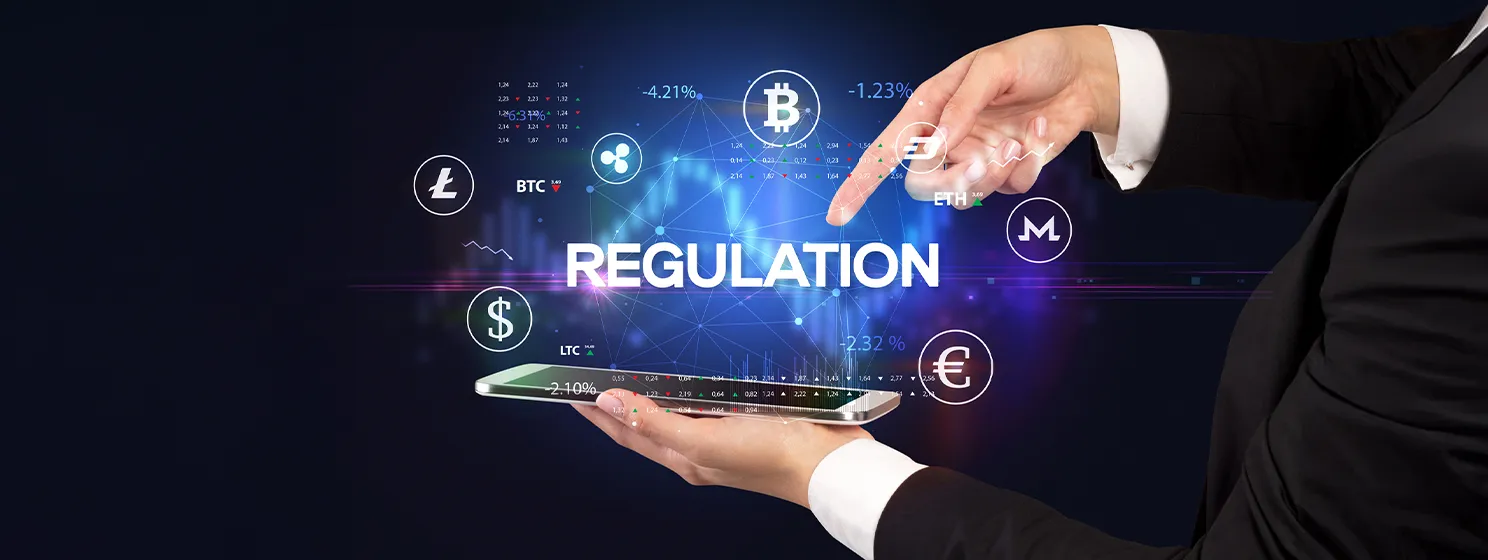|
Getting your Trinity Audio player ready...
|
Something big is happening in European finance.
The EU’s Markets in Crypto Assets regulation—MiCA for short—is finally here, setting a major transformation in how digital assets are governed across the continent.
And while unsparingly, there has already been a backlash from many of the usual digital currency industry talking heads—those who view any regulation as antithetical to the industry’s so-called foundational principles; it’s time to get real.
Establishing real guardrails and financial infrastructure is the only way digital currencies will ever achieve their lofty goals of mainstream adoption because here’s the thing about financial revolutions—without solid ground rules, they rarely (if ever) succeed.
For over a decade, digital currency has largely operated in a regulatory grey zone with all-too-predictable results.
The collapse of FTX in 2022, which wiped out billions in customer assets, was just the latest sordid tale highlighting the danger of unregulated digital currency empires.
Tether, the industry’s largest stablecoin, continues to play hide-and-seek with its reserves with next-to-nothing in the way (remember the $18.5 million paid to New York prosecutors to go away?)
These are just two examples of the wild west behaviour that MiCA will clean up.
Under the new framework, stablecoin issuers must maintain fully liquid reserves matching their tokens in circulation, subject to regular audits. They must provide detailed information about token functionality, associated risks and underlying technology.
But MiCA is more than reining in the litany of bad actors that populate the space.
The regulation creates something the digital currency industry has long lacked: a comprehensive rulebook that allows legitimate businesses to operate with certainty while protecting consumers.
The creation of EU-wide standards through MiCA mirrors how traditional financial markets evolved. The U.S. Securities Exchange Act of 1934—passed in the wake of the debilitating 1929 stock market crash—didn’t kill stock trading. It created the infrastructure for modern capital markets to flourish.
Let’s look at what MiCA actually means.
Under the regulation, digital currency service providers must obtain licenses demonstrating adequate capital reserves, cybersecurity measures and consumer protection policies. They must implement systems to prevent market manipulation and maintain detailed records of transactions. Cross-border business becomes simpler through passporting rights, allowing licensed firms to operate across the EU.
The horror.
From a consumer perspective, MiCA means unprecedented new protections. Exchanges must segregate customer assets from company funds and maintain insurance against losses. They must provide clear information about risks and fees. And if (when) things go wrong, there are now established procedures for filing complaints and seeking redress.
Let’s be clear: this isn’t about stifling innovation.
Clear rules of engagement are often a catalyst for widespread innovation by creating certainty. When banks know the rules for handling digital assets, they can confidently build new products. When investors understand their rights and protections, they’re more willing to participate in markets.
The early results are telling.
Since MiCA’s stablecoin provisions took effect in June 2024, several major financial institutions have announced plans for regulated euro-denominated stablecoins. These tokens, fully backed by liquid reserves and regularly audited, offer a stark contrast to Tether’s milk-like opacity.
Trading volumes have grown steadily as institutional investors, previously wary of digital currency’s regulatory risks, begin participating.
New platforms are emerging that combine the efficiency of blockchain technology with traditional financial controls. These “hybrid systems” maintain the benefits of digital settlement while adding layers of security and oversight that institutional investors require.
This points to perhaps MiCA’s most important long-term impact—legitimizing digital assets as a mainstream financial tool. By bringing digital currency under a comprehensive regulatory framework similar to traditional finance, the EU signals that digital assets have a place in the financial future if adequately governed.
Sure, some digital currency businesses will pack up and leave Europe rather than play by these rules.
Let them.
The future of finance was never going to be built by companies that can’t or won’t protect their customers.
The real question has never been whether or not digital currency needs regulation. It’s always been a question of what kind.
MiCA offers a model that could influence digital asset regulation globally. It demonstrates how to preserve the innovative potential of blockchain technology while adding necessary protections for users and the financial system.
As traditional finance increasingly embraces digital assets, the infrastructure MiCA creates will, in time, prove invaluable.
And you can guarantee that when major banks launch digital currency trading desks, when pension funds seek digital asset exposure, and when corporations issue tokenized securities, we won’t hear from “crypto bros” and cypherpunks as their bags are pumped.
This is the often-overlooked reality of financial innovation: revolutionary technology still requires boring but essential infrastructure to reach mainstream adoption. Remember, the Federal Reserve wasn’t created to kill banking, and the SEC wasn’t formed to destroy stock trading. Instead, they provided the stability these markets needed to ultimately flourish.
MiCA might just do the same thing for digital currency.
By creating a comprehensive framework for digital currency markets to operate—legally and safely—MiCA lays the groundwork for the next phase of financial innovation. Its success will not be measured by how many digital currency companies it restricts, but by how many new legitimate businesses it enables.
For Europe, this positions the continent at the forefront of regulated digital finance. While other jurisdictions continue debating how to handle digital assets, the EU has created a clear framework that could become a global standard.
And that might be precisely what the industry needs, whether it admits it or not.
Watch: Reggie Middleton on DeFi, booms/busts & crypto regulation

 08-05-2025
08-05-2025 





